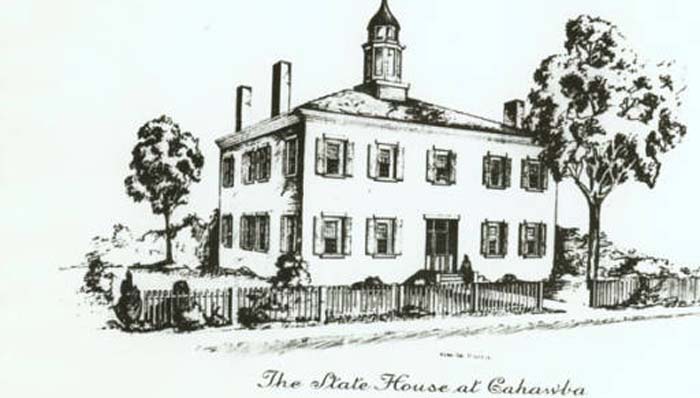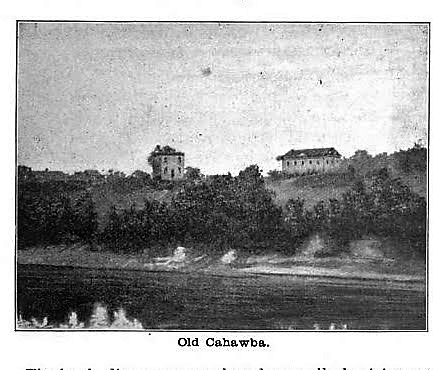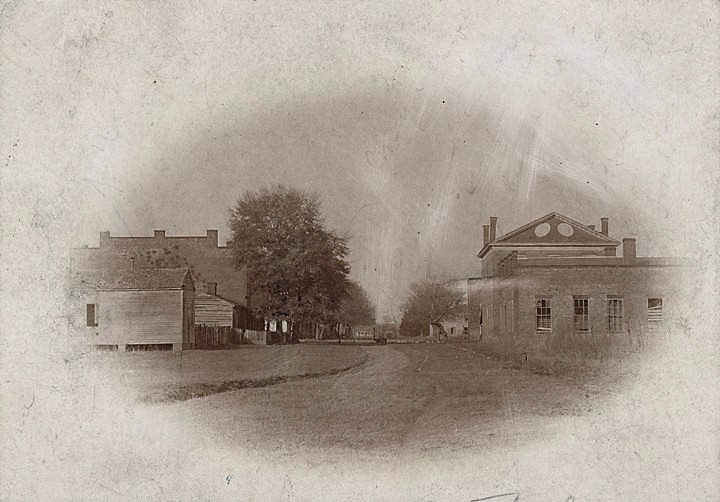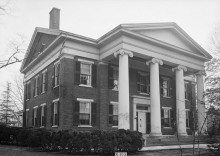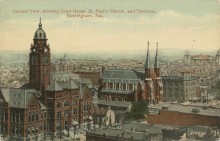Excerpt from
ALABAMA STATE CAPITOL
AN HISTORICAL SKETCH,
Brochure
by
JAMES B. SIMPSON,
Late Recording Secretary to the Governor
JANUARY 1898
Roemer Printing Co., Montgomery, Ala,, Printers.
REPORT ON CAHABA
Governor Bibb reported to the Legislature, that in the act admitting the State into the Union, the general government had set aside 1620 acres of land at the confluence of the Alabama and Cahaba rivers, as a site for the seat of government of the State. On this grant, he informed the Legislature, he had laid out the city of Cahaba, and, that, up to the time of making the report, he had sold lots in the new city to the amount of $123,856, one fourth of the purchase money being paid in cash, and that the money so realized was then being expended in the erection of suitable public buildings for the use of the State government.
Cahawba Old Cahawba (Sketches of Alabama Du Bose 1901)
In 1820 the public buildings in Cahaba were completed and that place became the seat of government of the State, the second session of the General Assembly of the State of Alabama meeting there in November, 1820. Cahaba was centrally located and it was the site selected by the commissioners appointed for that purpose at the session of the Legislature of the territory of Alabama held in St. Stephens. This commission consisted of Senator Titus and Messrs. Clement C. Clay, Samuel Dale, W. L. Adams and Samuel Taylor.
Perrine house Cahaba Alabama
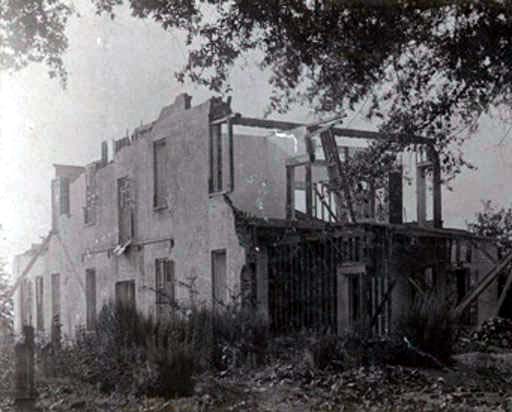
Back of house
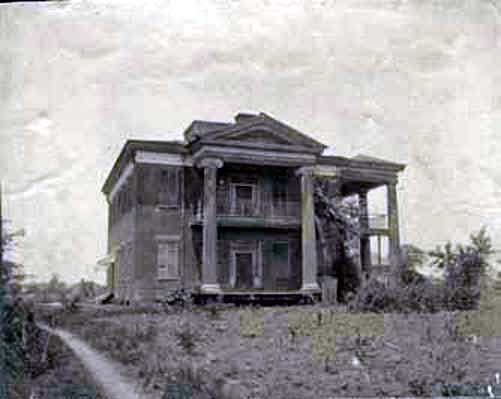
Cahaba remained the Capital until 1826, when by an act of the Legislature the seat of government was removed to Tuskaloosa. Cahaba has shared the fate of St. Stephens. It no longer exists as a town. Whose curse blighted it is not known. To-day the site formerly occupied by the city, which was the first permanent seat of government of the State of Alabama, is a cultivated cotton field.
Vine Street between Capital Avenue and South Street in Cahaba, Alabama ca. 1890 (Alabama Department of Archives and History)
The many brick stores, residences and warehouses which were erected there between 1820 and 1823 have been pulled down and the material of which they were constructed hauled many miles, in every direction, for use in erecting other buildings. In some instances frame structures were moved whole to sites in neighboring towns. The residence occupied by Gen. E. W. Pettus, now United States Senator from Alabama, while a resident of Cahaba, is standing on Alabama street in the City of Selma. But one brick building of old Cahaba remains standing, a residence owned by a family named Kirkpatrick, and occupied by one of its members as a home.
In Selma, which is about ten miles from Cahaba, many structures are now standing which contain material first used in buildings erected in Cahaba.
ALABAMA FOOTPRINTS – Volume I – IV: Four Volumes in One
The first four Alabama Footprints books have been combined into one book,
From the time of the discovery of America restless, resolute, brave, and adventurous men and women crossed oceans and the wilderness in pursuit of their destiny. Many traveled to what would become the State of Alabama. They followed the Native American trails and their entrance into this area eventually pushed out the Native Americans. Over the years, many of their stories have been lost and/or forgotten. This book (four-books-in-one) reveals the stories published in volumes I-IV of the Alabama Footprints series.


